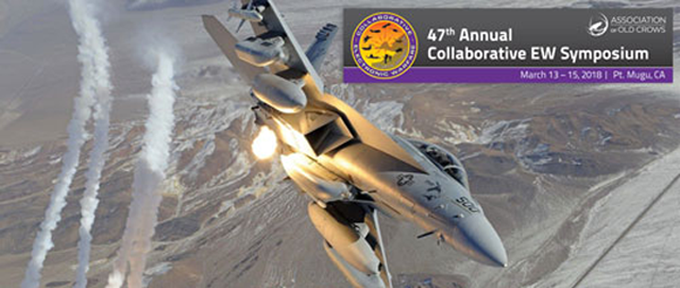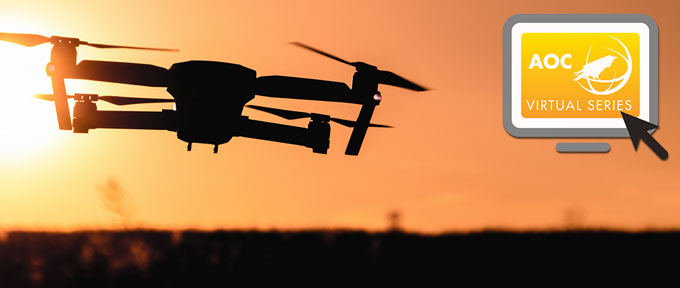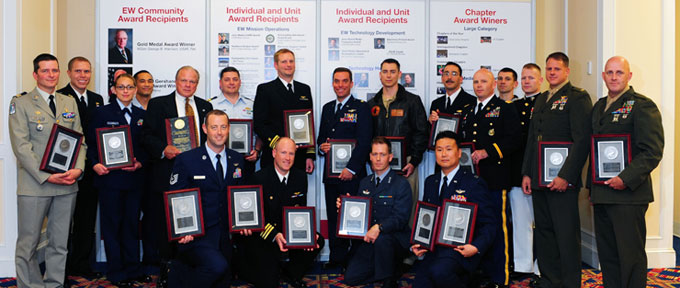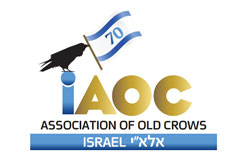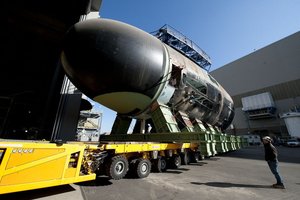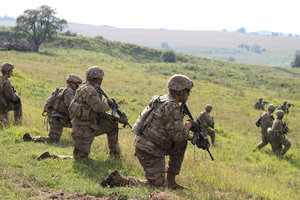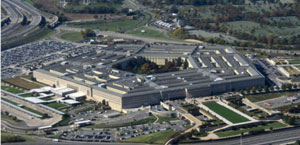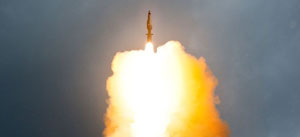 |
||||||||||||||||||||||||||
| Archive | Subscribe | crows.org | Resource Guide | www.jedonline.com | ||||||||||||||||||||||||||
| Association News | Chapter News | Industry News | Calendar | ||||||||||||||||||||||||||
|
Association News
As EW warfighting requirements continue to evolve in their complexity and interdependency, it is clear that future EW systems must work collaboratively with other Air, Ground, Surface, Space and Cyberspace systems. The 47th Annual Point Mugu Electronic Warfare Symposium will facilitate the exchange of enabling concepts and provide a venue to disseminate current research in the fields of Collaborative Electronic Warfare. Prominent leaders, contributors and representatives from the United States military, government, academia, and industry will come together to address current Electronic Warfare gaps and emerging technologies in Collaborative Electronic Warfare required to address these gaps. Sponsorship opportunities quickly selling out! Contact us today to secure your spot! Thursday, March 08, 2018 | 14:00-15:00 EST TDOA (Time Difference of Arrival) geolocation, also known as multilateration, is a well-known and highly effective technique for accurate localization and tracking of RF emitters. The technique is employed widely in EW applications including locating enemies in the battlefield. It is also used to locate sources of interference in test and training scenarios. Most of these applications have traditionally been restricted to 2D TDOA where sensors and targets are ground-based. The growing threat from UAVs has prompted an increased interest in techniques to geolocate emitters in three dimensions. TDOA techniques can be adapted for this purpose. Emerging threats are not restricted to high-end military UAVs in the battlefield. The use of commercial small UAV (sUAV) or drones is growing exponentially with ever increasing concerns for unintentional intrusion into secure military facilities, deliberate intrusion to create nuisance or conduct surveillance, interference with commercial and general aviation aircraft, and the use of low cost commercial drones to carry explosives. AOC 2018 Award Nominations are now open. There are two categories of awards. Competitive Awards: Recognize individuals and units for their outstanding performance in furthering the aims of the Association of Old Crows in support of the United States or Allied Electronic Warfare (EW), Information Operations (IO), Electromagnetic Spectrum Operations (EMSO). Every year, the AOC presents these prestigious awards to each recipient at the Annual AOC International Symposium and Convention: Nomination Deadline: May 1. Non-Competitive Awards: Provide the means for our Chapters and the AOC Board of Directors to recognize individual achievements and contributions any time of the year. These awards will NOT be presented at the Annual AOC International Symposium and Convention. Each year the AOC's membership determines the future of the Association by electing representatives to its Board of Directors. Nominations for the 2018 election will be accepted by or before or no later than April 2, 2018. Elections will begin on September 1, 2018 and will end on September 30, 2018. The 2018 election slate will be composed of two (2) At Large Director positions; as well as three (3) Regional Director positions representing the Central, Mid-Atlantic and the NEW Northwest Regions, respectively. Please consult the AOC website for the Chapters that are included in this newly established Region. Nomination packets must be received at AOC headquarters by close-of-business on Monday, April 2, 2018. If you wish to nominate more than one person, please duplicate the form. Nomination forms are also available on the AOC website at www.crows.org or by contacting the AOC’s Director of Membership, Ms. Glorianne O’Neilin, at oneilin@crows.org. When completed, the forms should be returned to the N&E Committee at: Association of Old Crows, 1000 North Payne Street, Suite 200, Alexandria, VA 22314, or by fax to (703) 549-2589. Visit crows.org for forms or download here. Completed forms may also be returned by e-mail to oneilin@crows.org.
The Association of Old Crows (AOC) Educational Foundation (AEF) will be providing two scholarships to college students studying in the fields of Science, Technology, Engineering and Math (STEM). These scholarships are funded by a $25,000 donation from the Raytheon Corporation. Two scholarships in the amount of $12,500 each will be awarded in May 2018. Applications are due no later than March 30. We are pleased to announce the Association of Old Crows has launched a new website that is fully integrated with our membership database. At the new crows.org, you can gain access members-only resources, the latest industry news, chapter groups, special interest groups, register for AOC events, and communicate with fellow members through our new community platform. Since this is a brand new platform, you will need to login to the new system by following these simple steps: 1. Click here to reset your password If you have any questions or comments regarding the new site/platform, feel free to contact us. There will be many improvements and features being added in the coming weeks and months, so please check back regularly. Thank you for being a part of the AOC community! Chapter News
The Fifth International Conference on Electronic Warfare is the latest event in the internationally acclaimed EWCI Conference Series in India, in the field of Electronic Warfare and related areas. The Conference is being organized by the much Awarded India Chapter of Association of Old Crows (AOC), Bangalore. The Conference has the active support of Defence Research and Development Organisation (DRDO), Government of India, Ministry of Defence and the Defence Public Sector Unit (DPSU), Bharat Electronics Limited (BEL), Bangalore.
The Israeli AOC Chapter 13th Conference EW – the cornerstone of national security – past, present and future. May, 8, 2018 The conference classification is SECRET and open to Israeli citizens with appropriate clearance. For information : info@iaoc.org.il Industry News
The Army Rapid Capabilities Office is delivering some of its first electronic warfare capabilities to soldiers in Europe. Soldiers in the 2nd Cavalry Regiment, 173rd Airborne Brigade, 1st Infantry Division are the first to receive prototype systems that fight against adversaries on the electromagnetic spectrum. “For the last 16 years, 17 years, the U.S. has been at war in a counter insurgency fight with all of its assets focused on winning in Iraq and Afghanistan. In that time, our near-peer competitors have studies our concepts, have studied our tactics, techniques and procedures. They’ve invested in areas where they believe they can defeat our strengths,” RCO Director Douglas Wiltsie told Federal News Radio in a Feb. 8 interview. (Federal News Radio)
Why does the Marine Corps Commandant want the Navy to build more attack boats? “As a naval force, part of a maritime campaign, we need more attack submarines,” Gen. Robert Neller said at the AFCEA-USNI WEST conference. Why? “I want to get where I’m going,” Neller said to laughter from the audience. “A bunch of lance corporals with M4s on the flight deck are not going to help me out.” In other words, if the amphibious warships carrying the Marines are to make it to striking distance of a hostile shore without being sunk, they need an escort of Navy submarines and aircraft — and (though Neller didn’t mention this last one) probably also Aegis ships for anti-aircraft and missile defense. (Breaking Defense) The Defense Department’s budget request for 2019 dramatically increases spending on research and new weapons, less so on personnel and readiness. That’s as promised by Defense Secretary Jim Mattis — and contrary to candidate Trump’s emphasis on a larger force during the campaign — but the actual figures are striking. Broken out by services, the Army (14.9 percent) and Air Force (14.1 percent) got the largest increases, while the Navy Department — which includes the Marine Corps — lags slightly (at a still respectable 12.1 percent). (Breaking Defense)
The Army’s fiscal year 2019 budget request will grow by roughly 8 percent over last year’s request to fill readiness gaps, addressing both capacity and capability holes which must be filled to carry out the new National Defense Strategy, Defense News has learned. Doing the math, that means the Army is set to receive between roughly $13 billion and $14 billion over last year’s request of $166 billion. The Pentagon has already confirmed its topline budget request for FY19 will be $716 billion. (Defense News)
Funding for the Defense Department’s innovation arm could nearly triple in 2019. The administration wants the Defense Innovation Unit Experimental to get $71 million for fiscal year 2019, up $41 million from 2018, DOD Comptroller David Norquist said during a Feb. 12 media briefing at the Pentagon on the proposed fiscal 2019 budget. (FCW) The role of top officer at the Army cyber directorate is going to Brig. Gen. Jennifer Buckner, who is now assigned to U.S. Cyber Command, Army officials said. The leader of the directorate handles cyber policy for the Army’s G-3/5/7 office at the Pentagon. Buckner is deputy commander of Joint Task Force-ARES, which engages in the cyber fight against ISIS, at U.S. Cyber Command at Fort Meade, Maryland. She was named to her current role last June, after serving as deputy commander of operations for the Cyber National Mission Force at U.S. Cyber Command. (Military Times)
One of the smaller line items in the Missile Defense Agency’s $9.9 billion budget request for 2019 is also one of the most interesting: $66 million to keep developing a laser that can be mounted on a drone and used to destroy enemy missiles on the launch pad — or shortly after takeoff. That amount includes $61 million to continue the laser-on-a-drone program, called the Low Power Laser Demonstrator, or LPLD, and $5 million to scale up its laser to sufficient destructive power. (Defense One) The Marine Corps is reevaluating its requirements for a large unmanned aerial vehicle capability. Top leaders have long expressed the need for a group 4 or 5 UAS capability that is organic to Marine Air Ground Task Force, or MAGTF. Speaking to reporters following a keynote address at the annual AFCEA West conference Feb. 7 in San Diego, California, Lt. Gen. Robert Walsh, commanding general of the Marine Corps Combat Development Command and Deputy Commandant for Combat Development and Integration, said the Marines need a unique capability that is different from what the joint force already has. (C4ISRNET) Calendar
|
||||||||||||||||||||||||||
